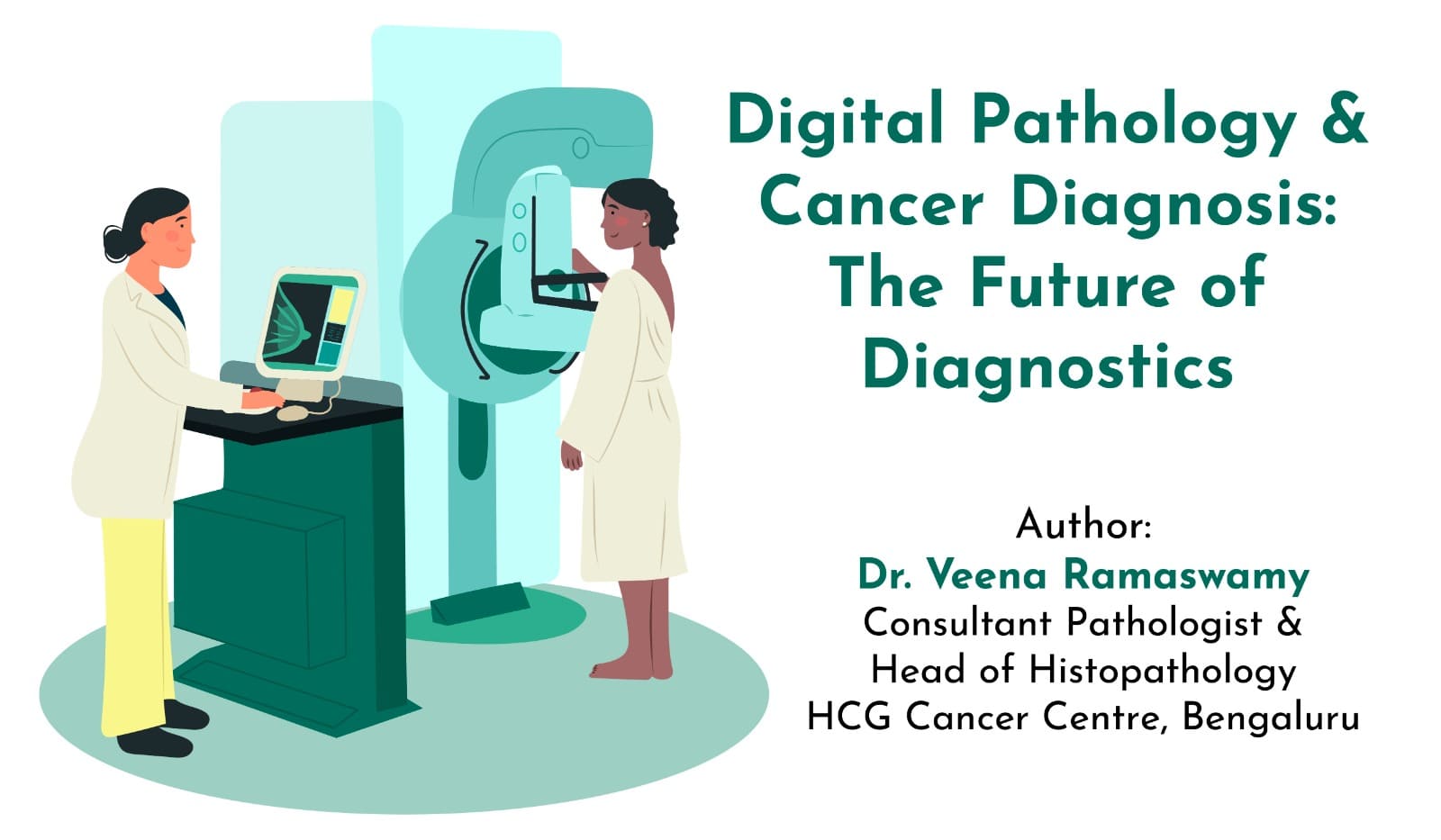
If you’ve ever waited for a medical report, especially one related to cancer, you know how stressful it can be. There’s worry, there’s waiting, and there’s a hope that everything goes smoothly. What if that process could be made quicker and more reliable? That’s exactly where digital pathology is starting to make a difference.
Let’s keep it simple. Traditional pathology involves doctors looking at tiny tissue samples under a microscope to check for disease. This is usually done using glass slides, and everything depends on what the pathologist sees with their eyes.
Digital pathology changes that; Instead of using just a microscope, these tissue samples are scanned and turned into digital images. These images can then be viewed on a computer, zoomed in and out, and easily shared with other doctors. It’s like the difference between film photography and digital cameras. Same job, better tools.
When it comes to cancer, timing and accuracy are everything. The earlier it’s found and the better it’s understood, the better the chances of successful treatment. Here’s where digital pathology really helps:
It’s not just about faster reports. It’s about making better decisions for patients.
You’ve probably heard of AI (Artificial Intelligence) being used in apps, phones, and even cars. Now it’s making its way into medicine too.
In digital pathology, AI doesn’t take over the doctor’s job. It simply assists. For example, if a tissue sample has unusual areas, the AI might highlight them for the doctor to look at more carefully. It’s like having an extra set of eyes, ones that never get tired. And doctors still make the final call. The technology is just there to support them.
At HCG Cancer Centre in Bengaluru, one of the senior doctors explained how digital pathology has made their work smoother and more efficient. Instead of waiting for slides, they now look at clear digital images, use helpful tools, and share them with other teams faster than ever before.
He also shared that this change is not just about new gadgets, it’s a new way of thinking. It helps doctors focus more on treatment and patients, and less on paperwork or delays.
You don’t have to be a doctor to find this useful. Digital pathology course is a growing field, and people from different backgrounds are now a part of it. If you’re:
If this sounds interesting, there’s a chance to learn it properly from experts.Global Healthcare Academy (GHA) is offering a Certificate Course in Digital Pathology, starting July 4.
You’ll learn:
It’s easy to follow and you don’t need to be an expert to join.
Medical science is changing. Doctors are now working with technology more than ever before.Digital pathology is one of those changes that’s already making a real difference. It’s helping doctors give faster, smarter answers and that helps patients, too.
If you’re curious about how all this works and want to be a part of this change, maybe it’s time to take that first step.
Take a look. Ask questions. Learn something new.
The future of diagnosis is already here. You can be part of it.